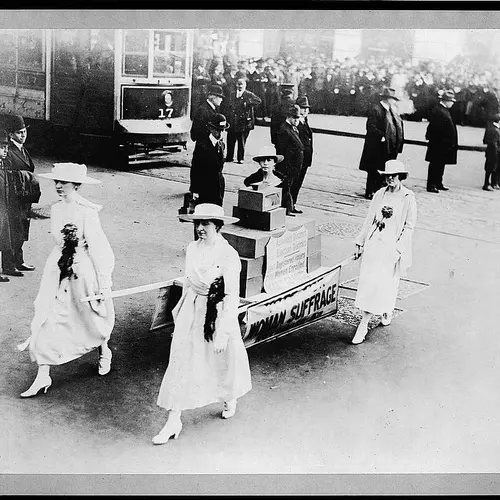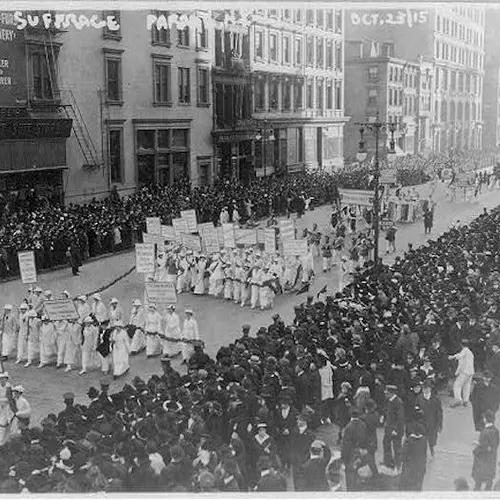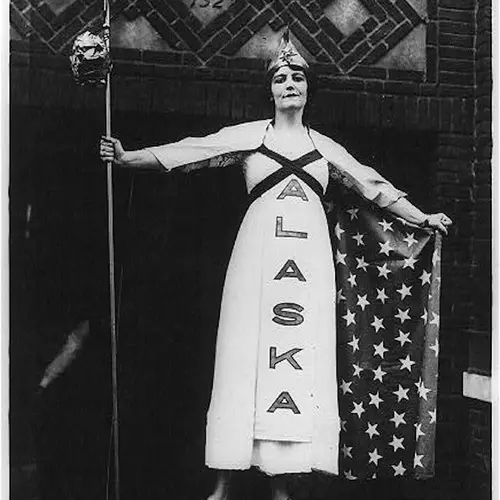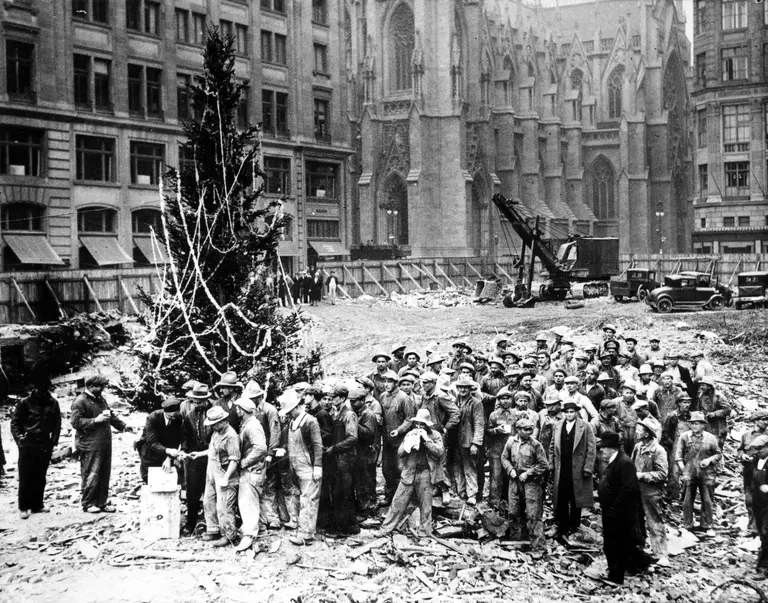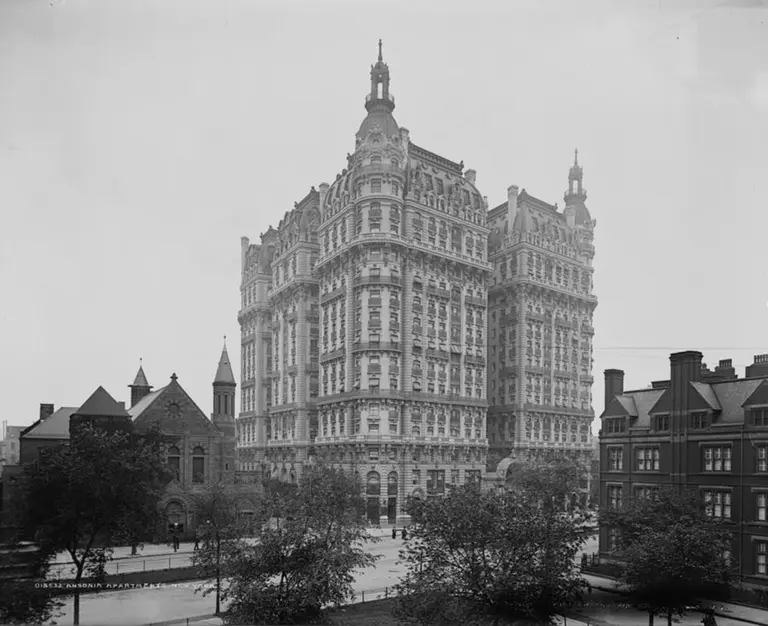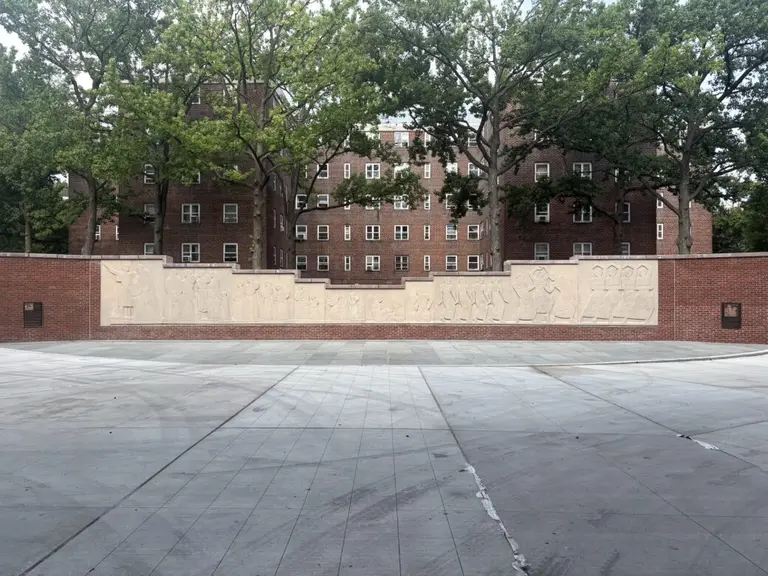On October 23, 1915, tens of thousands of NYC women marched for the right to vote
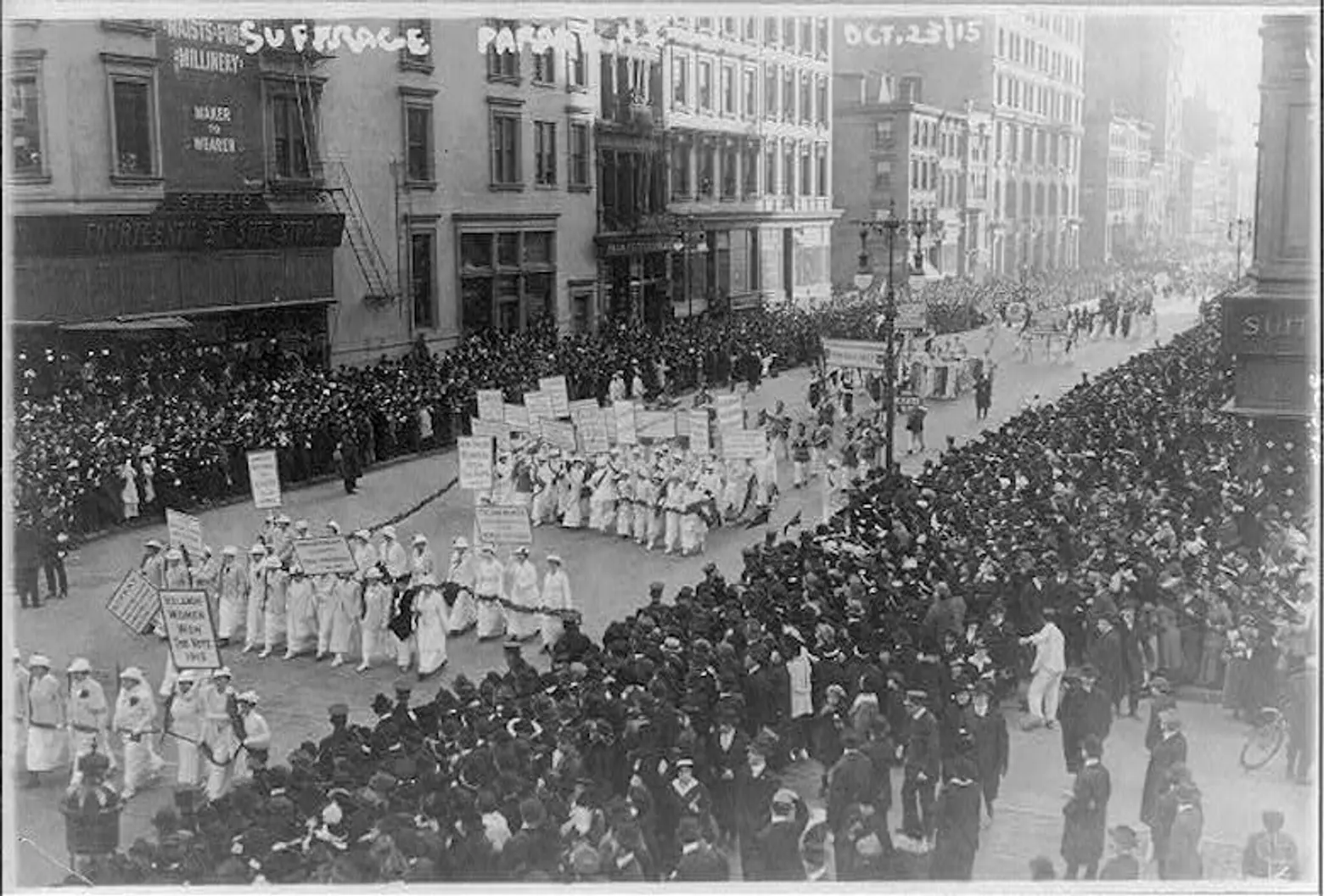
Pre-election parade for suffrage in NYC, in which 20,000 women marched. 1915. [Photograph] Retrieved from the Library of Congress
This August marked the 100th anniversary of the ratification of the 19th amendment, which gave some women the right to vote. In New York, a hotbed of suffragist activity in the mid 19th- and early 20th-century, women won the vote a few years earlier in 1917. While New York women were on the frontlines of the suffrage movement early on, one event served as a major turning point in winning the vote. On October 23, 1915, tens of thousands of New Yorkers dressed in all white took to Fifth Avenue, marching roughly three miles from Washington Square to 59th Street. It was the largest suffrage parade to date, with city officials at the time estimating between 25,000 and 60,000 participants.
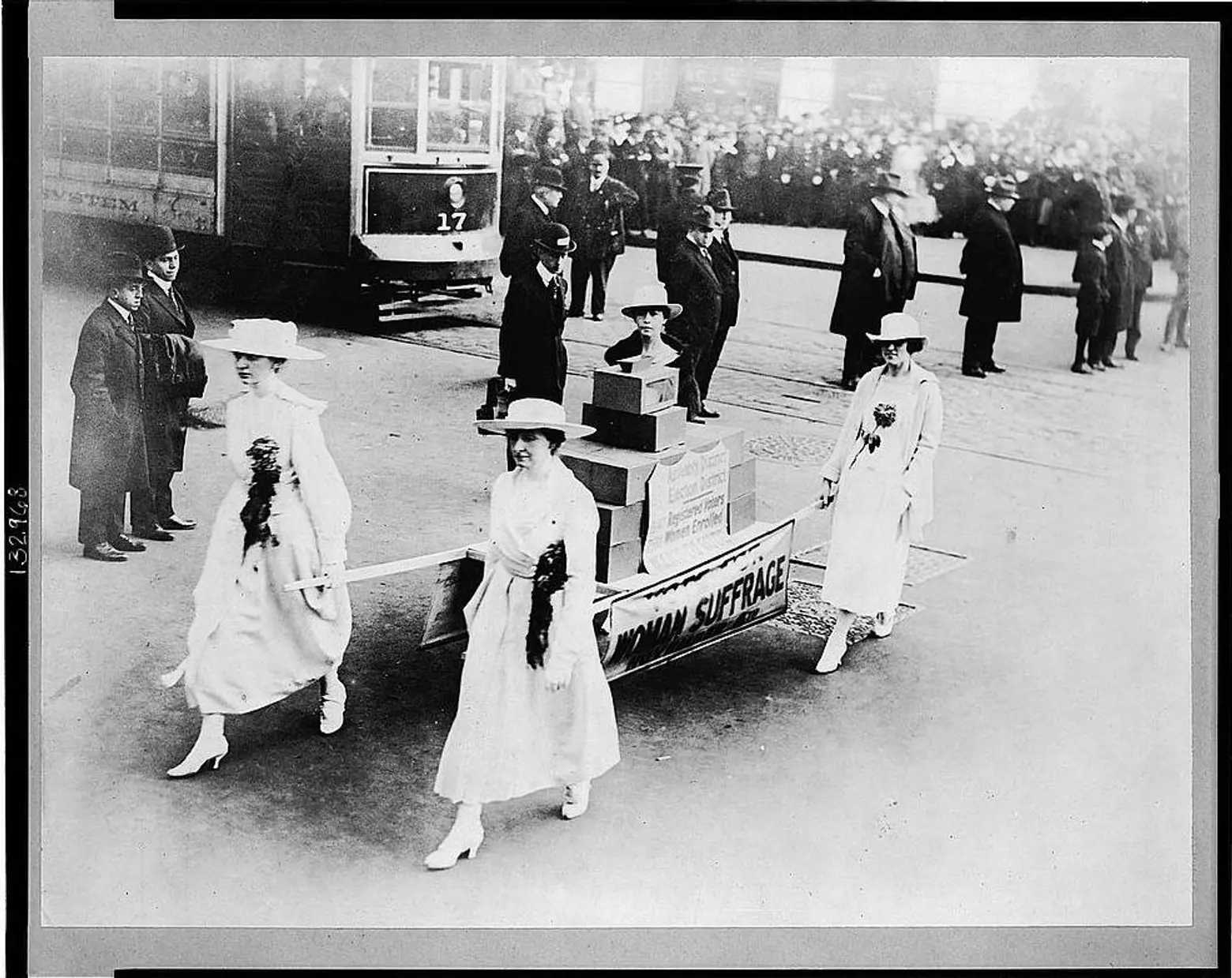
Four women carrying ballot boxes on a stretcher; Suffrage parade, NYC. New York, 1915. [Photograph] Retrieved from the Library of Congress
“The armies of suffrage came from all the five boroughs, from across the river, and from many up-State counties,” the New York Times wrote on October 24, 1915. “The marchers included men and women of all ages, from veterans in their seventies to babies pushed along in gocarts.”
Marchers wore white, with some wearing yellow suffrage banners, some holding the New York City flag, the blue, white, and yellow of the Woman’s Suffrage Party, and the green, white, and purple of the Woman’s Political Union, according to the Times.
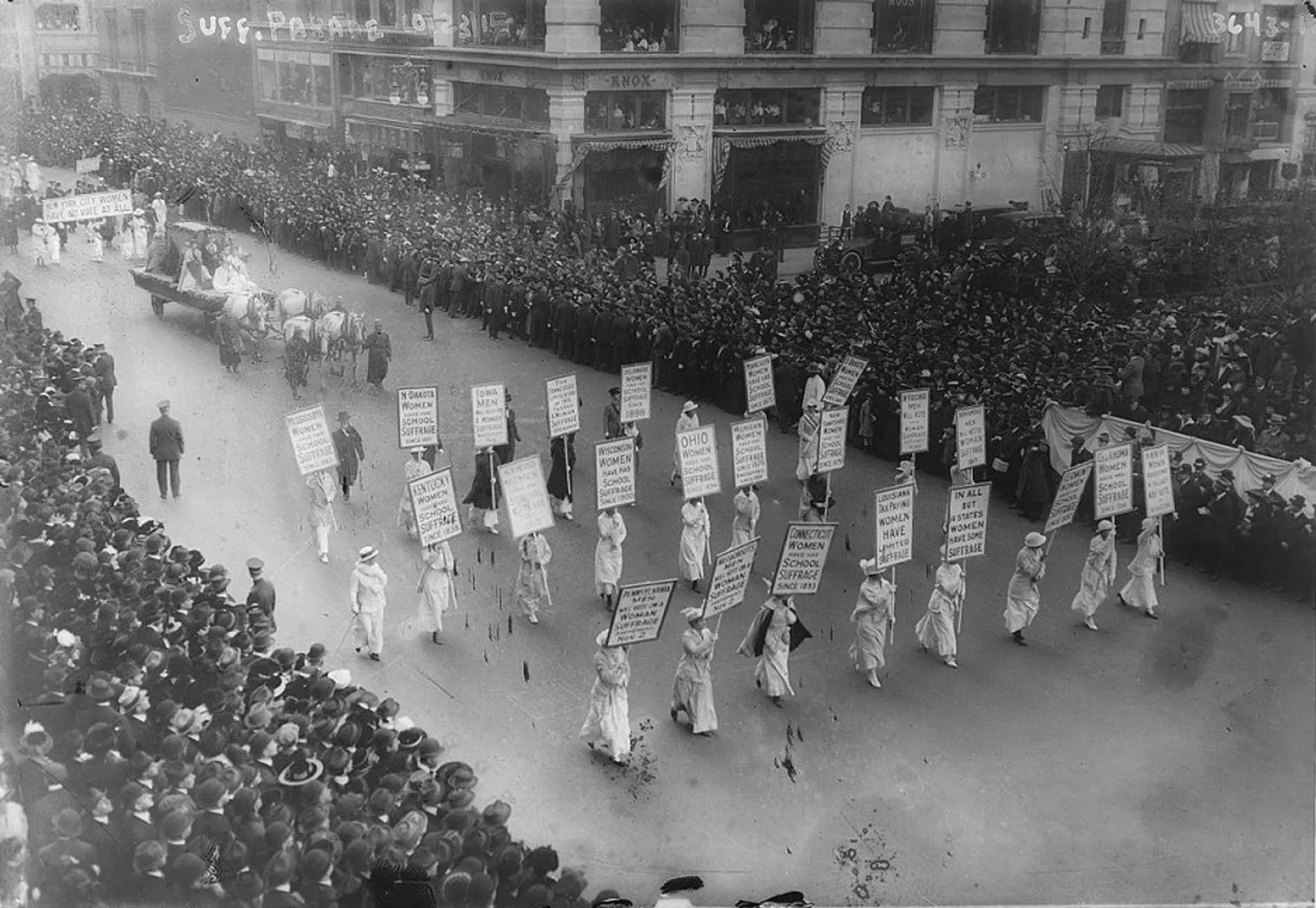
Suffragists marching, probably in New York City in. New York, 1915. [Photograph] Retrieved from the Library of Congress
While the police chief at the time estimated up to 60,000 marchers, the Times counted just under 26,000 (including 74 women on horseback) and anti-suffrage leaders reported just under 25,000. In comparison, the parade prior to the big event in 1915 garnered under 10,000 people in 1913.
Despite the discrepancy in the count, the parade was unquestionably the largest the city had seen at the time. “Anyway, it was undoubtedly the biggest and best suffrage parade, and undoubtedly it made a big impression on the crowds,” the Times wrote the day after the parade.
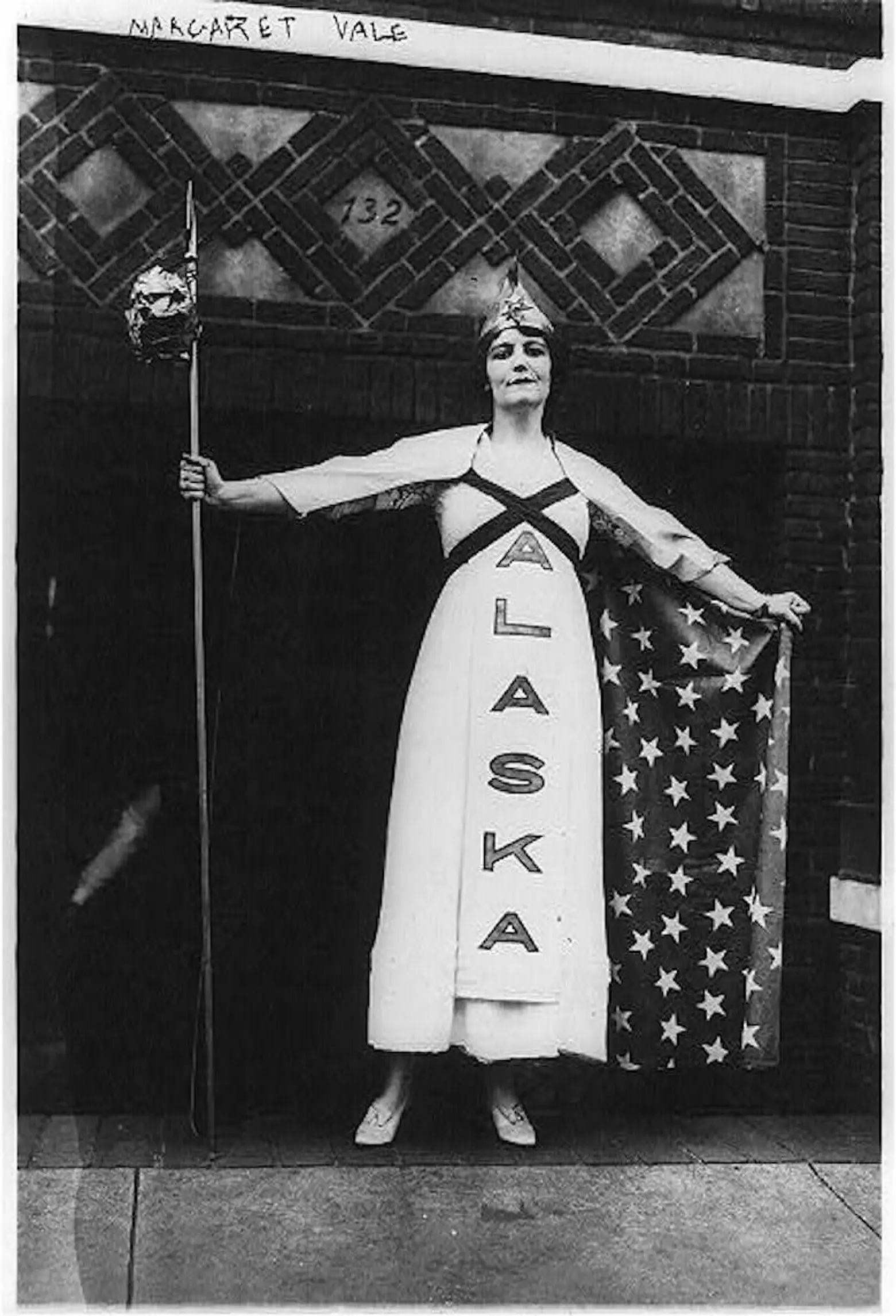
Margaret Vale (Mrs. George Howe), niece of Pres. Wilson in Suffrage parade, New York. Oct. 1915. October. [Photograph] Retrieved from the Library of Congress
The march took place two weeks before the state was set to vote on a referendum to give women the right vote. While the organizers pulled off the impressive event on October 23, they did not achieve their immediate goal. The referendum lost statewide and in the city, with 238,098 voting in favor and 320,843 opposed, according to The Gotham Center.
As reported by Time Magazine, the parade left an impression on Henry J. Allan, a Kansas newspaper editor who intitally watched the parade in jest. “It was absolutely overwhelming. Forty thousand women do not spend days getting ready for a five-mile march through crowded streets, and hours marching in a raw afternoon, for a transitory whim. It was the most democratic exhibition I have ever seen in New York,” he wrote.
Two years and many victories and defeats later, women officially won the right to vote in New York. In August of 1920, 36 states, including New York, ratified the amendment and it became part of the U.S. Constitution, mandating: “The right of citizens of the United States to vote shall not be denied or abridged by the United States or by any State on account of sex.”
Despite the victory, many black women and men across the country remained disenfranchised. After the 19th amendment was ratified, many states passed laws that discriminated against black people and created barriers that prevented them from voting, including intimidation and literacy tests.
In 2013, the Supreme Court overturned key parts of the 1965 Voting Rights Act, allowing nines states to change election laws without federal approval. GOP officials in those states rushed to create new laws to hinder early voting, end same-day voter registration, and require identification at polling places.
Voter suppression and intimidation continue to be a problem during the current election, with President Donald Trump amplifying lies about voter fraud and urging his supporters to “go into the polls and watch very carefully,” which voting rights organization warn could be considered voter intimidation.
Early voting begins in New York on Saturday, October 24. Use findmypollsite.vote to find your assigned early voting site, which may be different than your Election Day poll site. More details on how to request and track your absentee ballot and how to vote in person can be found here.
RELATED:
- This year, celebrate the centennial of women’s suffrage and Susan B. Anthony
- Field of sunflowers exhibit takes over Four Freedoms Park to honor 100 years of women’s suffrage
- New interactive map tells the story of women’s suffrage in Greenwich Village
- Brownstones and ballot boxes: The fight for women’s suffrage in Brooklyn
